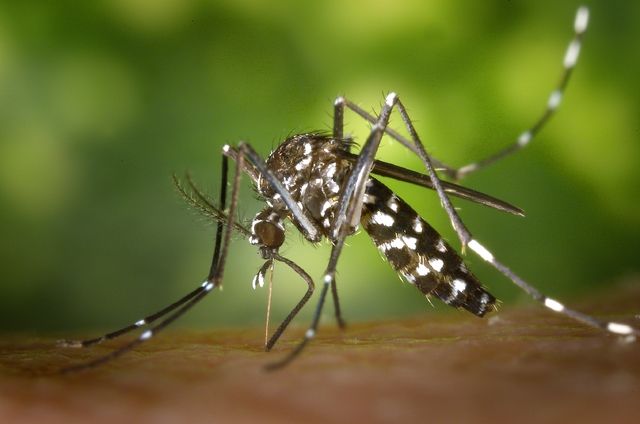LIHUE — A cluster of locally-acquired cases of dengue fever on Hawaii Island is growing, heightening concerns that the painful mosquito-borne disease could spread to other islands. All told, 79 dengue fever cases have been confirmed across the state, as
LIHUE — A cluster of locally-acquired cases of dengue fever on Hawaii Island is growing, heightening concerns that the painful mosquito-borne disease could spread to other islands.
All told, 79 dengue fever cases have been confirmed across the state, as of Thursday. Of those infected, 68 are Hawaii Island residents and 11 are visitors.
Health officials have identified South Kona — Hookena and Honaunau, in particular — as an area of particular concern, but the entire island is considered to be at risk and experts say all islands in the state should be vigilant. Mosquitoes are capable of spreading the disease across islands.
“I think most importantly the county and the state and the federal government is really working together coordinating assets and we are applying the resources necessary to contain and manage this situation,” Gov. David Ige said Thursday at a press conference on Oahu. “The White House is monitoring and engaged, they are active.”
The U.S. Navy and Army National Guard are also involved in the statewide effort to halt dengue from spreading, Ige said.
Dengue is not endemic to Hawaii. However, it is intermittently imported from endemic areas by infected travelers. This is the first cluster of locally-acquired dengue fever since the 2011 outbreak on Oahu.
State Department of Health spokeswoman Janice Okubo said there are actions Kauai residents can and should take to reduce their risk of infection.
“We’re asking people throughout the state to exercise mosquito control and take precautions against mosquitoes,” Okubo said. “There are no cases we’re investigating for Kauai and the other islands, But there are people who travel to other countries that are endemic for dengue fever, so we should always be exercising mosquito control and doing our part to reduce the amount of mosquitoes that are around, because they do carry disease.”
Last week, the DOH launched “Fight the Bite,” a public education campaign that aims to end the spread of dengue fever in Hawaii through education. The campaign encourages Hawaii residents and visitors to apply mosquito repellent containing 20 to 30 percent DEET, wear long-sleeved shirts and pants, use indoor insecticides and reduce the amount of mosquitoes on their property by clearing areas with standing water.
While there are no easy solutions for managing mosquitoes, the most effective way to reduce their numbers around homes and neighborhoods is eliminate their breeding sites — standing water. A clogged rain gutter or a neglected bird bath, wheel barrow, leaky faucet that produces a puddle, pet food dish or flower pot bottoms can produce hundreds of new mosquitoes in a just a few days. If possible, turn these items over when they are not in use.
Of course, waterfalls, ponds and swamps aren’t so easily dealt with. On Hawaii Island, state health officials are conducting assessments of areas of concern for the presence of mosquitoes and may as a precaution spray areas with the insecticide Aqua Reslin.
Dengue fever is closely related to the West Nile virus and yellow fever. Symptoms related to dengue can include fever, severe headaches, pain behind the eyes, joint or muscle pain and skin rash. A minority of severe dengue cases can be fatal.
People experiencing dengue symptoms should contact their health care provider and avoid further exposure to mosquitoes. There is no specific treatment for dengue, but early detection and access to proper medical care lowers fatality rates below 1 percent, according to the World Health Organization.
Before 1970, only nine countries worldwide experienced severe dengue epidemics, according to WHO. The disease is now endemic in more than 100 countries in regions of Africa, North America, South America, the Eastern Mediterranean, South-East Asia and the Western Pacific. Today the Americas, South-East Asia and Western Pacific regions are the most seriously affected.


